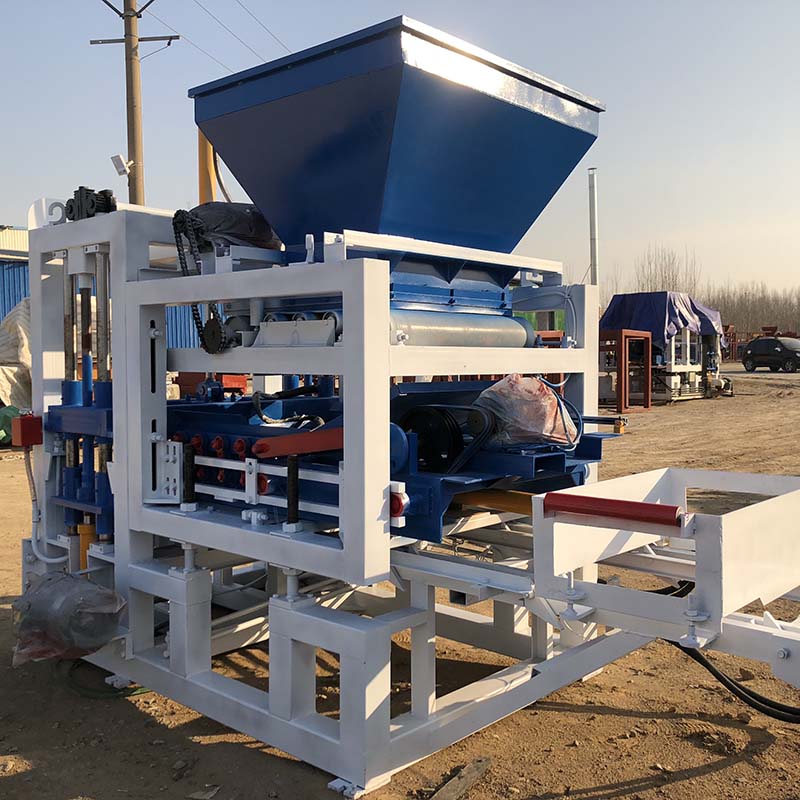
Image source:Aiwei block machine
Introduction
In the realm of modern construction, the evolution of concrete block making machines stands as a testament to human ingenuity and the relentless pursuit of efficiency, sustainability, and quality. From basic hand-operated devices to technologically advanced systems, these machines have undergone a remarkable transformation, revolutionizing the construction industry. In this article, we delve into the exciting innovations that have propelled concrete block making machines to the forefront of modern construction, redefining the way we build, design, and inhabit structures.
1. The Foundation of Modernity: Evolution of Concrete Block Making Machines
The history of concrete block making machines dates back to the mid-19th century, with the advent of steam-powered devices. Over the years, innovations have led to the development of highly efficient and versatile machines that cater to the demands of contemporary construction practices.
- Early Innovations: Steam-powered machines brought mechanization to block production, enhancing efficiency and consistency.
- Transition to Hydraulic Systems: Hydraulic systems replaced manual labor, improving compaction and block quality.
- Automated Molding: Introduction of automatic molding systems further expedited production, reducing human intervention.
2. The Digital Transformation: Integration of Automation and Precision
In the 21st century, concrete block making machines have embraced digital technology, transforming the way concrete blocks are manufactured.
- Automation: Modern machines are equipped with automation features, allowing for precise control over the entire production process.
- Computer-Aided Design (CAD): CAD software enables the creation of intricate block designs, promoting customization and innovation.
3. The Role of Artificial Intelligence (AI) and Internet of Things (IoT)
The incorporation of AI and IoT has ushered in a new era of smart concrete block making machines, characterized by data-driven decision-making, real-time monitoring, and predictive maintenance.
- AI for Quality Control: AI algorithms analyze block dimensions, shape, and texture, ensuring uniformity and adherence to design specifications.
- IoT-Enabled Monitoring: IoT sensors collect data on machine performance, energy consumption, and material usage, facilitating remote monitoring and optimization.
4. Eco-Friendly Concrete Blocks: Sustainable Innovations
In response to the growing emphasis on sustainable construction, concrete block making machines have introduced innovative techniques that reduce environmental impact.
- Recycled Aggregates: Some machines are designed to incorporate recycled aggregates, reducing the demand for virgin materials.
- High-Performance Insulation Blocks: Machines can produce blocks with improved thermal insulation properties, contributing to energy-efficient buildings.
5. Customization and Design Flexibility
Modern architecture demands innovation and design flexibility. Concrete block making machines are rising to the challenge by enabling customized block production.
- Intricate Designs: Precision molding technology allows for the creation of blocks with intricate patterns, textures, and designs.
- Architectural Aesthetics: Customized blocks cater to architects’ visions, enabling the realization of unique building facades and interior spaces.
6. Advancing Construction Efficiency
Concrete block making machines are redefining construction efficiency by streamlining processes and reducing construction timelines.
- Faster Production: Automation and precision molding significantly expedite the block production process, reducing project timelines.
- Reduced Labor Intensity: Automation reduces the need for manual labor, freeing up skilled workers for other tasks.
7. Enhancing Structural Integrity and Durability
The innovations in concrete block making technology have a direct impact on the structural integrity and durability of buildings.
- Uniformity: Automation ensures uniformity in block dimensions, reducing the risk of structural flaws and inconsistencies.
- Quality Assurance: AI-driven quality control minimizes the chances of substandard blocks entering construction projects.
8. Collaboration and Industry Synergy
Concrete block making machine manufacturers collaborate with architects, engineers, and construction professionals to drive innovation and meet the evolving needs of the industry.
- Design Collaboration: Manufacturers work closely with architects to create customized blocks that align with architectural visions.
- Technical Expertise: Collaborations with engineers ensure that machines meet safety standards and construction requirements.
9. Overcoming Challenges
Despite the advancements, challenges remain, such as cost considerations, training requirements, and the need for skilled operators.
- Initial Investment: The cost of acquiring advanced machines and providing training for operators can be a barrier for some businesses.
- Skilled Labor: Training operators to handle automated systems and interpret data remains essential.
Conclusion: The Blueprint for the Future
Innovations in concrete block making machines are redefining modern construction, with AI, IoT, and automation paving the way for a new era of efficiency, sustainability, and design innovation. These machines bridge the gap between tradition and modernity, honoring the legacy of concrete block production while embracing cutting-edge technology. As the construction industry continues to evolve, the role of concrete block making machines will remain pivotal, shaping the skylines of our cities and the foundations of our built environment. With each block that is produced, these machines lay the foundation for a more sustainable, efficient, and visionary future in construction.
